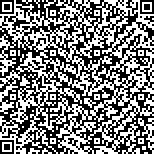本文已被:浏览 1230次 下载 3259次
投稿时间:2007-11-29 修订日期:2008-01-24
投稿时间:2007-11-29 修订日期:2008-01-24
中文摘要: 微波遥感可以穿透云顶直接探测对流云内的冰态粒子分布,受冰晶粒子的强烈散射衰减作用
,AMSU B的3个微波水汽吸收波段亮温随冰粒子的增加而降低。由于探测权重高度不同,辐
射传输过程中受冰粒子的散射影响也不尽相同,3个水汽通道之间存在亮温差异,这种差异
与对流云的强弱密切相关。
利用微波向量辐射传输模式(VDISORT)模拟了云雨粒子对微波水汽通道观测的影响,并利
用2005年8月12日华北地区的对流天气过程,分析了AMSU B通道亮温与对流强弱变化之间的
对应关系。在此基础上,建立了一种利用NOAA卫星AMSU B水汽通道亮温差定量判识深对流
云和冲顶对流云的方法。利用该方法对典型对流降水云团进行判识,结果显示,微波识别的
对流云区可以较好地表征强降水的分布,其中的冲顶对流区与可见光云系的上冲云顶结构有
着很好的对应。
Abstract:Microwave remote sensing has a unique ability to penetrate the clouds and get th
e distribution of ice. The brightness temperatures of the AMSU B three channels
near to the water vapor absorption line have high sensitivity to frozen hydrome
teors in convective cloud systems. As the ice contents ascend, the brightness te
mperatures descend due to the ice scattering attenuation.
Especially, the brightness temperature differences between the three channels ar
e suggested as a criterion to detect the deep convective clouds.
Based on the simulation of the influence of the water vapor, cloud and precipita
tion particles on the three microwave brightness temperatures, and by analyzing
the convective synoptic process occurred on 12 August 2005, the relationship bet
ween the brightness temperatures and the convective intensity is studied. Furthe
rmore, a measurable method is developed to estimate and identify the deep convec
tive clouds and convective overshooting. This method is employed to investigate
some typical convective systems. The results show that the convective cloud iden
tified by AMSU B data well corresponds to the precipitation area, and even the
convective overshooting region corresponds to the overshooting clouds structure.
文章编号: 中图分类号: 文献标志码:
基金项目:国家高技术研究发展计划“多源卫星资料强对流监测与追踪方法研究
(2006AA12Z106)国家基础研究项目基金“我国南方致洪暴雨监测与预测的理论和方法研究”(2004CB418305)资助
| 作者 | 单位 |
| 方翔 | 北京大学物理学院大气科学系,北京,100871 中国气象局中国遥感卫星辐射测量和定标重点开放实验室 国家卫星气象中心 |
| 邱红 | 中国气象局中国遥感卫星辐射测量和定标重点开放实验室 国家卫星气象中心 |
| 曹志强 | 中国气象局中国遥感卫星辐射测量和定标重点开放实验室 国家卫星气象中心 |
| 王新 | 北京大学物理学院大气科学系,北京,100871 |
| 洪刚 | 北京大学物理学院大气科学系,北京,100871 |
引用文本:
方翔,邱红,曹志强,王新,洪刚,2008.应用AMSU-B微波资料识别强对流云区的研究[J].气象,34(3):22-29.
Fang Xiang,Qiu Hong,Cao Zhiqiang,Wang Xin,Hong Gang,2008.Research on Severe Convective Cloud Identification by Using AMSU B Microwave Data[J].Meteor Mon,34(3):22-29.
方翔,邱红,曹志强,王新,洪刚,2008.应用AMSU-B微波资料识别强对流云区的研究[J].气象,34(3):22-29.
Fang Xiang,Qiu Hong,Cao Zhiqiang,Wang Xin,Hong Gang,2008.Research on Severe Convective Cloud Identification by Using AMSU B Microwave Data[J].Meteor Mon,34(3):22-29.

